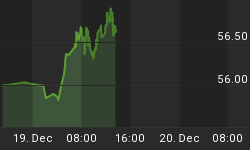On Thursday November 2nd, Reuters News reported that Fed Governor Bies was of the opinion that the bulk of the housing recession was behind us. If Governor Bies is correct, this would go down in post-war history as one of the shallowest housing corrections on record.
Chart 1 shows a history of housing starts from January 1959 through September 2006. I have identified, admittedly somewhat arbitrarily, seven housing cycles prior to the current one. The average peak-to-trough decline of these seven cycles was 47.3%, ranging from minus 63.7% (January 1972 to February 1975) to minus 18.4% (December 1998 to July 2000).
Chart 1
In the current cycle, housing starts peaked at 2.213 million units annualized in February 2005 and reached a low of 1.674 million units annualized in August 2006 for a peak-to-trough decline of 24.4%. If the peak-to-trough decline in the current cycle were to match the seven-cycle average of minus 47.3%, the annualized pace would need to bottom out at 1.166 million units.
How likely is it that this housing correction will be milder than average? To answer this we need to first determine whether the current housing cycle is less extreme than prior cycles. If you look at the dollar-volume of single-family home sales to GDP (Chart 2), you will notice that this is hardly the case. The dollar-volume to GDP ratio reached a record high 16.3% in 2005, almost double the median percentage of the entire series dating back to 1968.
Chart 2
* combined new and existing home sales
So, the current housing cycle isn't less extreme than prior cycles, but is the correction near the bottom? Not according to the supply-demand balance. Chart 3 shows the year-over-year percent change in single-family homes for sale vs. the year-over-year percent change in single-family homes sold. In September of this year, homes sold fell 15.7% year-over-year while homes for sale increased 30.4%. The sold - for sale spread in September was minus 46.1% - the most negative spread ever except for minus 53.2%, which occurred in July.
Chart 3
* Combined new and existing
Add to this the fact that single-family home prices are now plummeting. Charts 4 and 5 bear this out. The median price of a new single-family home fell 9.7% year-over-year in September - the largest percentage decline since December 1970. The median price of an existing single-family home fell 2.5% year-over-year in September - the largest percentage decline in the history of the series, which goes back to January 1968.
Chart 4
Chart 5
If, as indicated by the supply-demand balance, the housing correction isn't near its bottom, then home prices still have further to fall. Falling home prices would imply much slower growth in home equity for households, which, in turn, would imply much less home equity available for withdrawal. As Chart 6 shows, mortgage equity withdrawal by households hit a record high annualized rate of $732 billion (8.1% of disposable personal income) in the third quarter of last year. As of the second quarter of this year, the annualized rate of mortgage equity withdrawal had slipped to $327 billion. Mortgage equity withdrawal, along with record corporate stock buybacks, has enabled households in recent years to spend in excess of their after-tax incomes (see "How Do Households Keep Spending More Than They Earn?"). Chart 6 shows that mortgage equity withdrawal is already slowing, and with the expected further decline in home prices, it is likely that withdrawals will slow even more in the quarters ahead.
Chart 6















